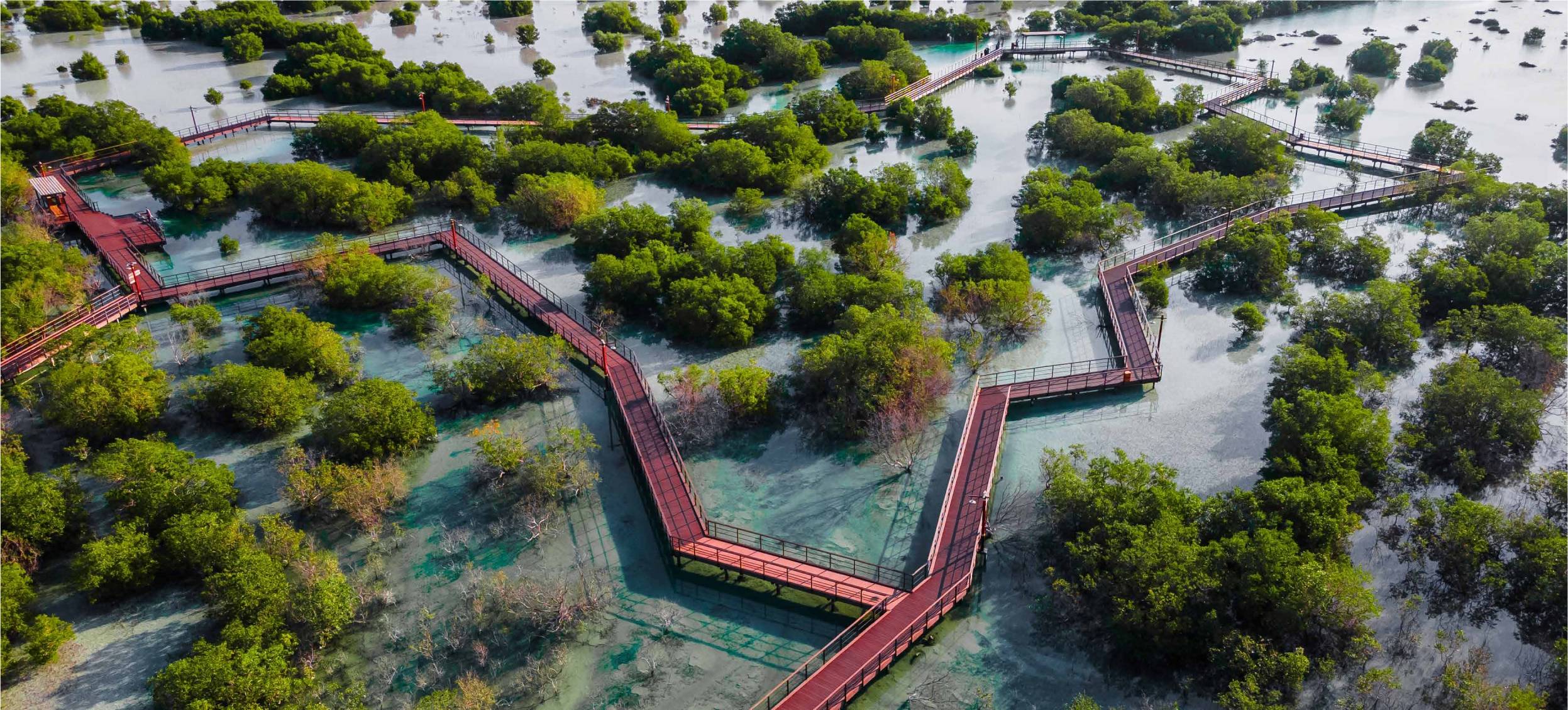STEP 4: CAPITALIZING ON CARBON SEQUESTRATION
WHAT IS CARBON SEQUESTRATION?
Carbon dioxide is the most commonly produced greenhouse gas and a major contributor to global warming and climate change. Carbon sequestration is the process of capturing and storing atmospheric carbon dioxide. It is one method of reducing the amount of carbon dioxide in the atmosphere with the goal of reducing global climate change.
THERE ARE TWO TYPES OF CARBON SEQUESTRATION
Geologic carbon sequestration is the process of storing carbon dioxide (CO2) in underground geologic formations. The CO2 is usually pressurized until it becomes a liquid, and then injected into porous rock formations in geologic basins.
Biologic carbon sequestration refers to the storage of atmospheric carbon in vegetation, soils, woody products, and aquatic environments. By encouraging the growth of plants-particularly larger plants like trees-advocates of biological sequestration hope to help remove CO2 from the atmosphere.
In Abu Dhabi, mangroves and seagrass meadows are used to hold carbon in the soil and the biomass of the plants.

